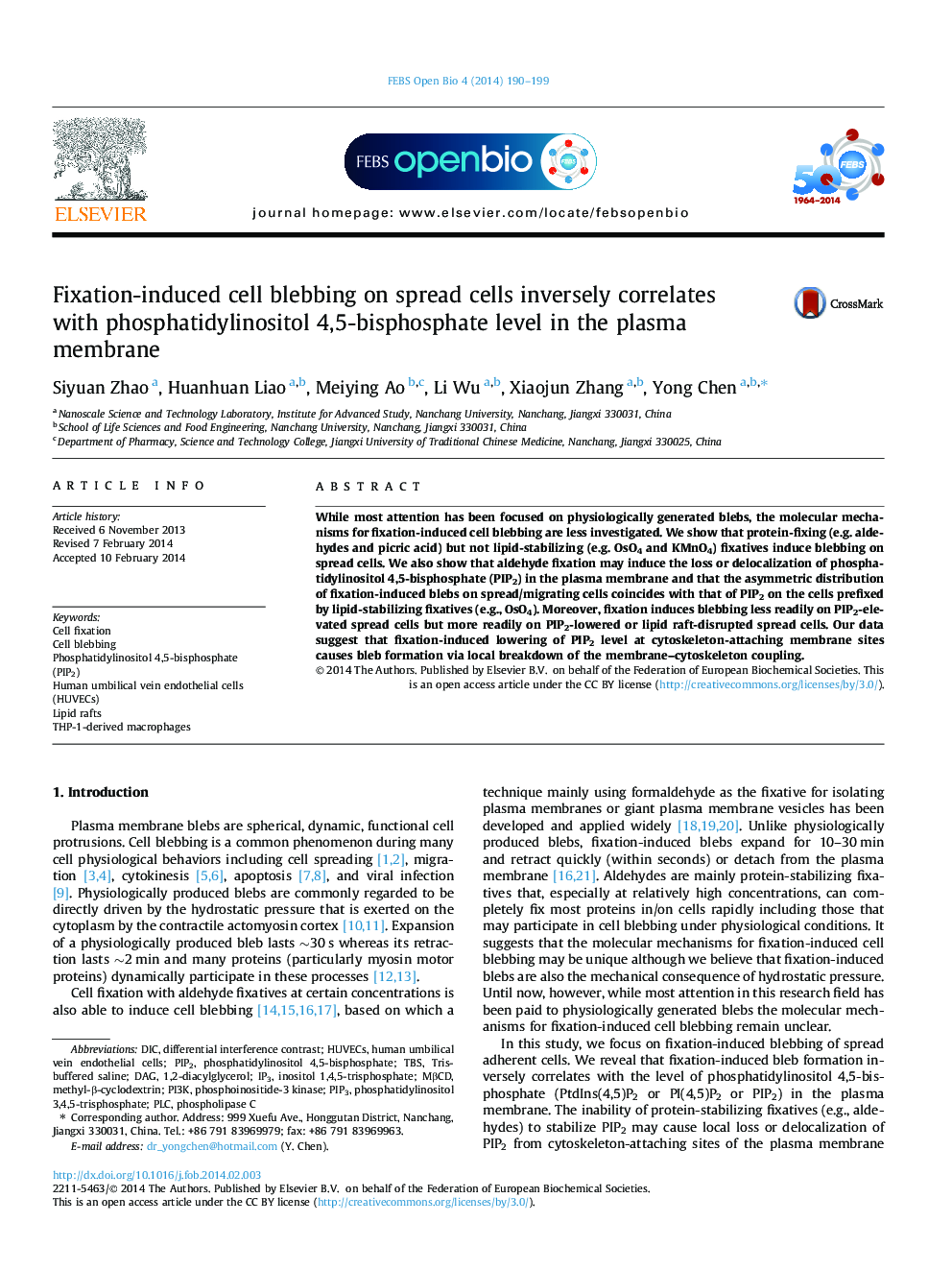| Article ID | Journal | Published Year | Pages | File Type |
|---|---|---|---|---|
| 1981676 | FEBS Open Bio | 2014 | 10 Pages |
Abstract
While most attention has been focused on physiologically generated blebs, the molecular mechanisms for fixation-induced cell blebbing are less investigated. We show that protein-fixing (e.g. aldehydes and picric acid) but not lipid-stabilizing (e.g. OsO4 and KMnO4) fixatives induce blebbing on spread cells. We also show that aldehyde fixation may induce the loss or delocalization of phosphatidylinositol 4,5-bisphosphate (PIP2) in the plasma membrane and that the asymmetric distribution of fixation-induced blebs on spread/migrating cells coincides with that of PIP2 on the cells prefixed by lipid-stabilizing fixatives (e.g., OsO4). Moreover, fixation induces blebbing less readily on PIP2-elevated spread cells but more readily on PIP2-lowered or lipid raft-disrupted spread cells. Our data suggest that fixation-induced lowering of PIP2 level at cytoskeleton-attaching membrane sites causes bleb formation via local breakdown of the membrane-cytoskeleton coupling.
Keywords
DICTHP-1-derived macrophagesPIP2PIP3Phosphatidylinositol 4,5-bisphosphate (PIP2)MβCDPLCIP3PI3KHUVECSTBS1,2-Diacylglycerolinositol 1,4,5-trisphosphateTris-buffered salineDAGHuman umbilical vein endothelial cellsHuman umbilical vein endothelial cells (HUVECs)phosphatidylinositol 3,4,5-trisphosphatephosphatidylinositol 4,5-bisphosphatephospholipase Cphosphoinositide-3 kinaseCell fixationmethyl-β-cyclodextrindifferential interference contrastLipid rafts
Related Topics
Life Sciences
Biochemistry, Genetics and Molecular Biology
Biochemistry
Authors
Siyuan Zhao, Huanhuan Liao, Meiying Ao, Li Wu, Xiaojun Zhang, Yong Chen,
